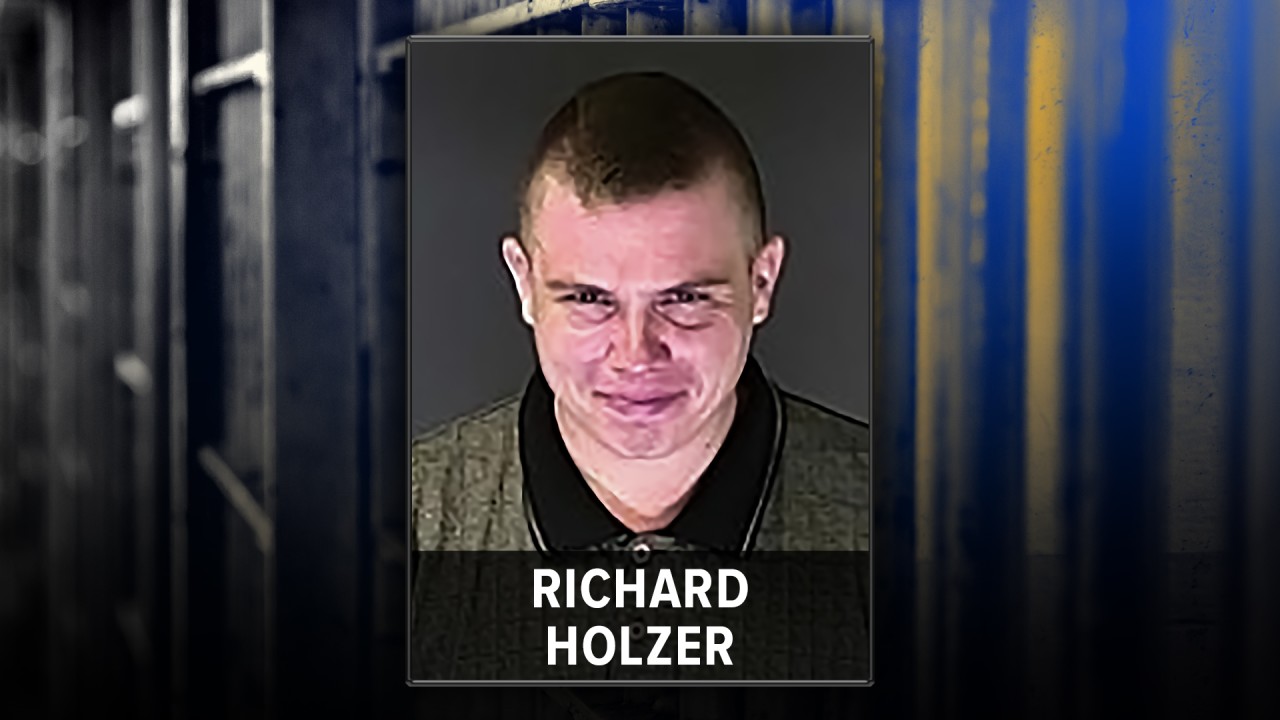
The FBI has arrested a 27-year-old Colorado man who was allegedly planning to bomb a synagogue in Pueblo. Court documents say Richard Holzer was arrested after he examined fake pipe bombs that had been prepared by co-conspirators who turned out to be undercover agents. His arrest came just two days before his planned bombing of The Temple Emanuel synagogue in Pueblo, Colorado.
“After being contacted by undercover FBI agents posing as fellow white supremacists, Mr. Holzer indicated that he wanted to do something that would let Jewish people in the Pueblo community know that they are not welcome and that, according to him, they should leave or they will die,” U.S. Attorney for the District of Colorado Jason Dunn said.
Undercover FBI agents had been tracking and interacting with Holzer since late September after he came on their radar for continually talking about killing Jews in online forums. The investigation of Holzer began after an undercover FBI agent purporting to be a woman who supports white supremacy contacted him on Facebook in September. Holzer allegedly sent the agent pictures and video of himself with guns and images related to white supremacy.
Agents say Holzer once wrote on Facebook, “I wish the Holocaust really did happen… they need to die.” According to court documents, Holzer messaged the undercover agent about initiating a racial holy war and said with was going to Temple Emanuel “to scope it out.” He told the agent that he planned to poison the synagogue with arsenic-something he claimed to have done before, but ultimately wanted to shut the synagogue down and condemn it.
That agent arranged for him to meet with friends who were actually more undercover agents on Oct. 17 in Colorado Springs. He allegedly talked to them about his plan before volunteering that he could use Molotov cocktails on the building when asked what other methods he was considering to shut down the building. The FBI claims that Holzer was the first person to mention using explosives during the meeting. After they visited the synagogue later that day, the affidavit says Holzer observed that Molotov cocktails would not be enough, and he and the agents then discussed using pipe bombs, which the agents offered to supply.
During a meeting where the agents brought what Holzer thought were live explosives, he described them as “absolutely gorgeous” and said they should go ahead with the attack overnight to avoid police, the court document said. The agents arrested him during that meeting.
The Temple Emanuel synagogue is the second-oldest in Colorado and was completed in 1900, according to Temple Emanuel’s website. It has a congregation of about 30 families and a rabbi from Denver who travels two hours away to Pueblo twice a month.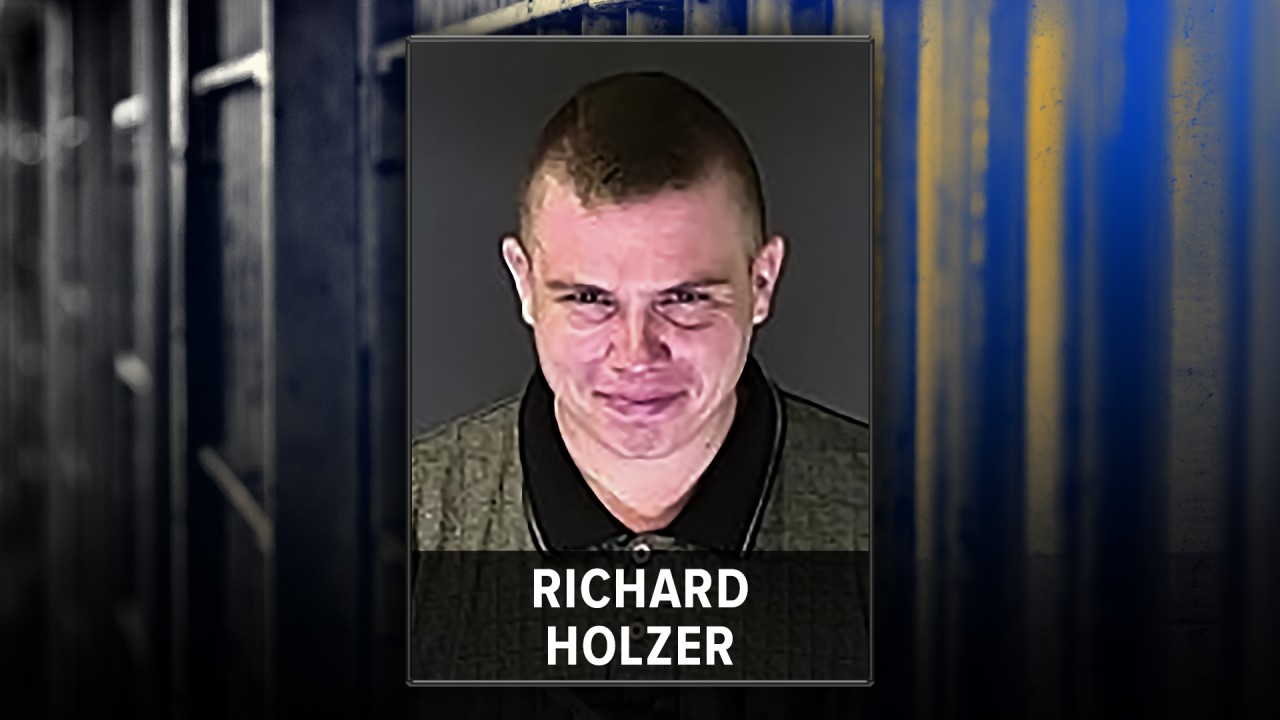
Read more
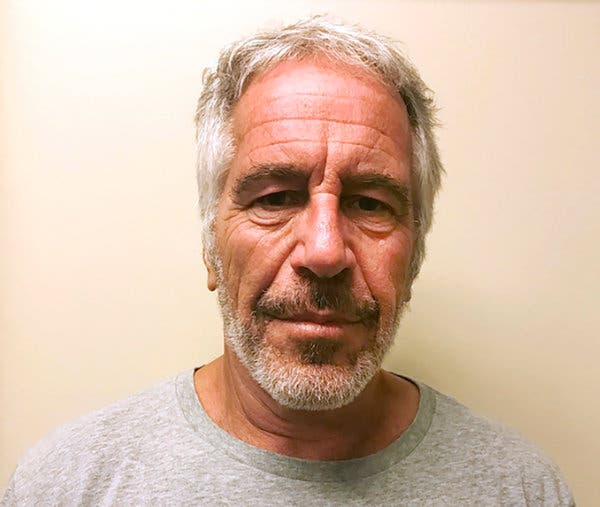
A forensic pathologist hired by the brother of Jeffrey Epstein says the injuries that killed the multimillionaire sex abuser were consistent with strangulation — not a death by suicide, as a New York medical examiner reported. Dr. Michael Baden says a broken bone in Epstein’s neck is “extremely unusual in suicidal hangings and could occur much more commonly in homicidal strangulation.” The claim by Dr. Michael Baden, a former New York City medical examiner who has worked on high-profile cases during a five-decade medical career, is certain to reignite suspicions that surfaced immediately after Epstein.
Epstein was found dead in his Manhattan jail cell on August 10th as he awaited trial on federal sex trafficking charges. Epstein once counted President Trump and former President Bill Clinton among his high-profile friends. Prosecutors alleged that the previously convicted sex offender paid girls as young as 14 hundreds of dollars for massages before he molested them in his homes in New York and Palm Beach, Fla., between 2002 and 2005. Since he was awaiting trial in federal prison, federal agencies had jurisdiction over the investigation into his death.
Baden noted that the 66-year-old Epstein had two fractures on the left and right sides of his larynx, specifically the thyroid cartilage or Adam’s apple, as well as one fracture on the left hyoid bone above the Adam’s apple. “Those three fractures are extremely unusual in suicidal hangings and could occur much more commonly in homicidal strangulation.” There were also hemorrhages in Epstein’s eyes that were common in homicidal strangulation and uncommon, though not unheard of, in suicidal hangings, the forensic pathologist said.
While there’s not enough information to be conclusive yet, the three fractures were “rare,” said Baden, who’s probed cases involving O.J. Simpson, President John F. Kennedy, Martin Luther King, record producer Phil Spector, New England Patriots star Aaron Hernandez and many others. “I’ve not seen in 50 years where that occurred in a suicidal hanging case,” the 85-year-old said.
The ligature, or item used to tie something tightly, allegedly was made from a sheet that had been twisted and put around Epstein’s neck, Baden said. Evidence on the cloth material could help prove whether or not someone else was involved in Epstein’s death. “Whoever it is would have their DNA all over the ligature,” he said. “We don’t have those results yet,” he added, saying those results “should be reported quickly to give an idea and lessen the speculation.”
Chief Medical Examiner Dr. Barbara Sampson said in a statement that she is standing by her findings. “Our investigation concluded that the cause of Mr. Epstein’s death was hanging and the manner of death was suicide. We stand by that determination,” she told Fox News in a statement. “We continue to share information around the medical investigation with Mr. Epstein’s family, their representatives, and their pathology consultant. “The original medical investigation was thorough and complete,” she continued, adding that “there is no reason for a second medical investigation by our office.”
Read more
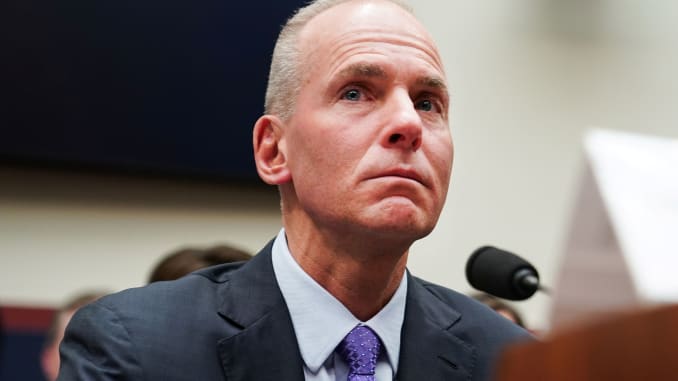
Boeing CEO Dennis Muilenburg testified before a pair of congressional committees for the first time since two deadly crashes of 737 MAX airliners, which killed a combined 346 people. His testimony follows a report in the Washington Post that top Boeing executives failed to intervene after two top pilots at the company identified problems with automated flight control software that would lead to the crashes in Indonesia and Ethiopia. The Justice Department is also conducting criminal investigation against Boeing. Muilenburg admitted Boeing failed to provide pilots with additional key safety system information.
During the hearing, Muilenburg acknowledged for the first time that he had been briefed, prior to the second crash, of messages from a test pilot who had raised safety concerns about the 737 Max. Boeing said it gave those messages to the Department of Justice in early 2019, but only alerted the Federal Aviation Administration and Congress to the existence of those messages in the past few weeks.
The House Transportation Committee released a redacted copy of a 2015 email in which a Boeing expert questioned making the flight system called MCAS depend on just one sensor to measure the plane’s pitch — its “angle of attack,” or AOA. Boeing went ahead with the single-sensor design, with no backup to prevent MCAS from pushing the plane into a dive. Investigators believe faulty readings from a single sensor triggered nose-down commands before both crashes. Muilenburg explained changes Boeing is making to the Max and other steps it is taking to improve safety. He conceded that the company “made some mistakes” in designing MCAS and telling regulators and pilots about the system.
Members of the House Committee on Transportation and Infrastructure also focused on why Boeing decided to only have one sensor on the outside of the plane, with no back-up, to alert pilots when the angle of the aircraft was off. They also asked why the plane’s safety system only gave pilots four seconds to react to take back control of the plane if a malfunction occurred. While acknowledging that Boeing planned to make fixes to the craft, some lawmakers also questioned why the company took so long to come to that conclusion. “We would do it differently if we knew what we know today,” Muilenburg said.
Several committee members pressed the CEO to make more changes in the aftermath of the crash, including giving up some of the $15 million in pay and bonus he received last year, out of $23 million in total compensation for 2018. Boeing successfully lobbied regulators to keep any explanation of the system, called MCAS, from pilot manuals and training. After the crashes, the company tried to blame the pilots, said Senator Richard Blumenthal, Democrat from Connecticut. “Those pilots never had a chance,” Blumenthal said. Passengers “never had a chance. They were in flying coffins as a result of Boeing deciding that it was going to conceal MCAS from the pilots.”
Representative Albio Sires also read a worker email sent to the head of Boeing’s 737 production team in mid-2018 that claimed high production goals were straining workers and increased the potential for mistakes. “For the first time in my history with Boeing I would be hesitant about putting my family on a Boeing airplane,” wrote the veteran Boeing employee. Muilenburg said he only became aware of the worker’s concerns after the Lion Air 737 Max crash October 29. He said the 737 production line was working at a “high rate” at the time and the issues raised by the now-retired employee had been investigated and addressed. Boeing, in fact, never cut back the production of the planes, despite the concerns. 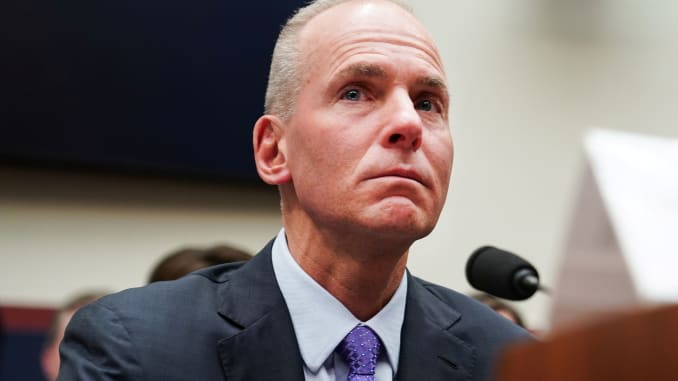
Read more
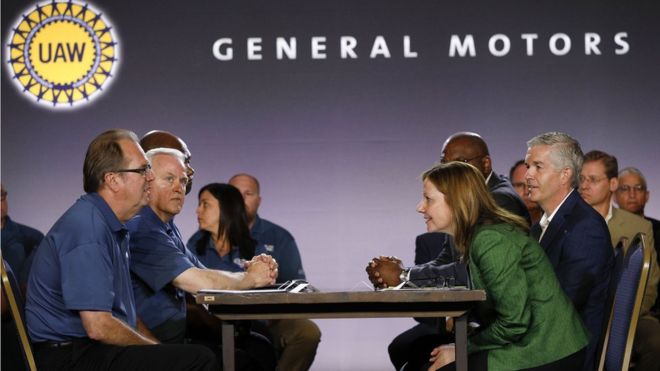
After a 40-day strike, a new four-year deal between the United Auto Workers and General Motors was approved. The contract was supported by 57% of the labor union. It includes an $11,000 bonus per member, annual raises and more affordable healthcare. General Motors still plans to close three factories in the United States.
The United Auto Workers union emerged with substantial wage increases of 3 percent in the second and fourth years and 4 percent lump sum payments in the first and third years, similar to what the union obtained in 2015. Even larger gains are in store for those in a category called “in progression,” the lower scale of a two-tier wage system negotiated in 2007 when the Detroit automakers were financially reeling.
Workers hired after that date, about a third of the overall work force, started at about half the pay of veteran employees and had no prospect of reaching the top wage, currently $31 an hour. Over the course of the new contract, the disparity will be phased out, and those with four years’ experience will rise along with more senior workers to the new top level of $32 an hour. In addition to pay increases, G.M. workers will get bonuses of $11,000 for ratifying the contract. They will continue to pay 3 percent of their cost of health care, well below the percentage that G.M.’s salaried workers contribute.
There were also rewards for temporary workers, about 7 percent of G.M.’s union work force, who will have a path to permanent employment after three years. About 900 of them will become full employees in January, the union said, and 2,000 more by 2021.
It also won commitments to new G.M. investments in United States factories. As part of the new contract, the company pledged to invest $7.7 billion in its United States plants, and another $1.3 billion in ventures with partners, providing a measure of job security. G.M. will put $3 billion toward overhauling the Detroit-Hamtramck plant, which had been scheduled to close in January. Three-quarters of the 700 workers there voted in favor of the contract.
At the same time, the agreement allows G.M. to close three idled factories permanently, including one in Lordstown, Ohio, eliminating excess manufacturing capacity at a time when auto sales are slowing. It also puts the company in a more stable position if the economy goes into a recession. The closing of the Lordstown plant was one of the main sticking points for some workers voting against the contract. “We did everything that G.M. ever asked of us at times of concessions,” said Bill Goodchild, a member of Local 1112 in Lordstown. “We feel we deserve a product.”
About 48,000 United Auto workers walked off the job over one month ago, making it the longest national strike at GM by United Auto Workers in nearly 50 years. The contract finally ends a strike that many estimate has cost GM $1.75 billion in losses. “We delivered a contract that recognizes our employees for the important contributions they make to the overall success of the company,” G.M.’s chief executive, Mary T. Barra, said in a statement.
Read more
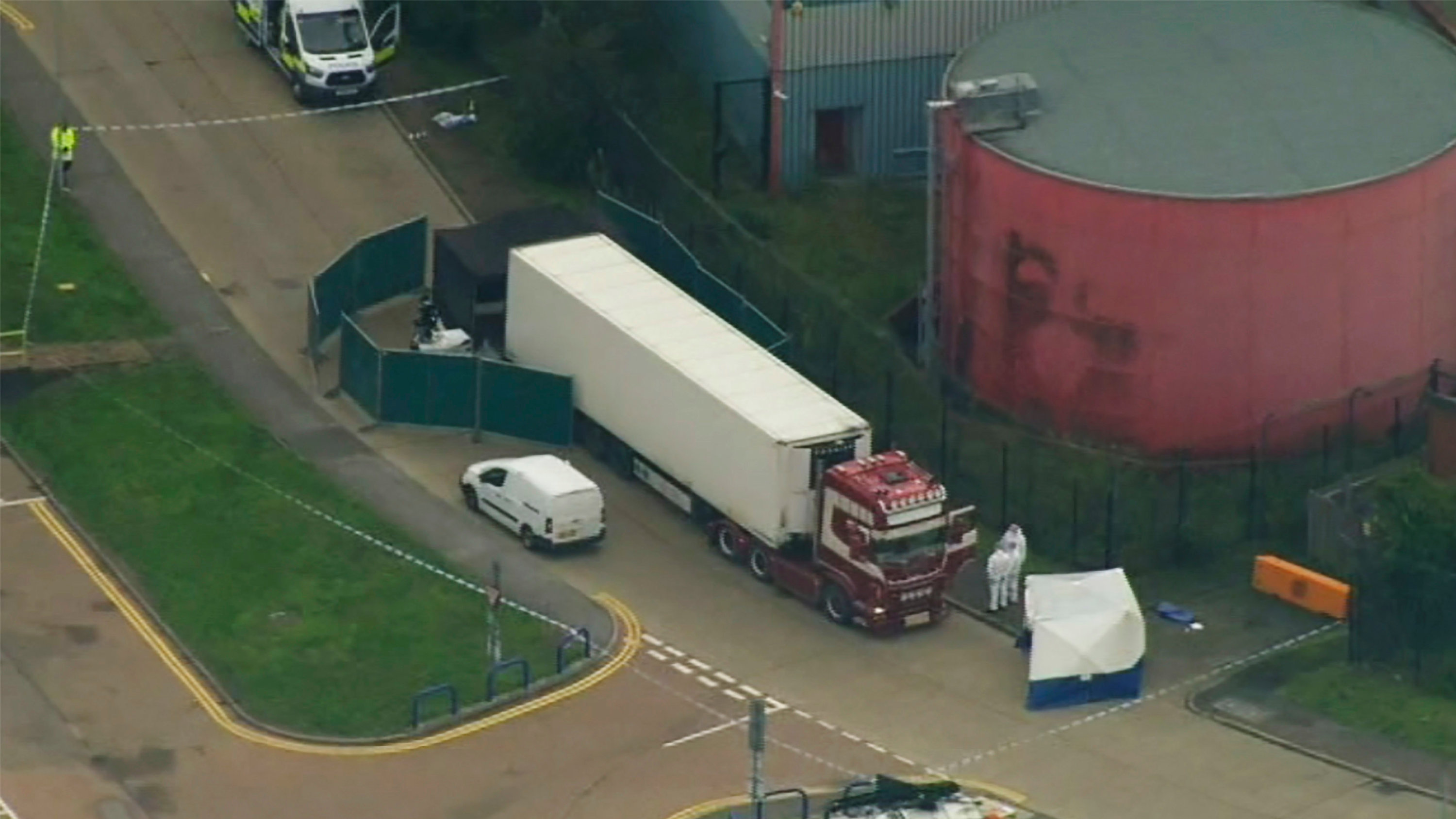
Britain police launched one of the largest murder investigations in decades after the bodies of 39 people were discovered in the back of a tractor-trailer at an industrial park east of London. Emergency services were called to an industrial park in the town of Grays in Essex, 20 miles east of London, at around 1:40 a.m. local time when the vehicle was discovered to have people inside. Thirty-nine people were pronounced dead at the scene.
The victims were found in the refrigerator unit inside the truck. Police confirmed that there were 8 women and 31 men inside the truck. The Essex police department said it was not immediately clear if the victims froze to death or suffocated. A police spokesperson said the truck had a Bulgarian license plate and entered the U.K. in Holyhead, Wales on October 19th. Holyhead is one of the busiest ferry ports in the area with primary service to Ireland. Authorities called such a route into the U.K. “unusual.”
Investigators believe the refrigerated trailer started its deadly journey in Zeebrugge, Belgium to Purfleet, England, where it arrived early Wednesday. Police believe it the tractor traveled from Northern Ireland to Dublin, where it took a ferry to Holyhead in Wales before picking up the trailer at the dockside in England. They have also suggested that two different trucks pulled the semitrailer at different times though it is not clear when the 39 people entered the refrigerated trailer.
Soon after, UK police have charged a 25 year old truck driver with 39 counts of manslaughter and conspiracy to traffic people in connection with 39 deaths in the back of the truck he was driving in southeastern England. Police say Maurice Robinson, 25, of Craigavon, Northern Ireland. He was the first of five people arrested in what is seen as one of the U.K.’s biggest cases of human trafficking.
U.K. police are struggling to identify the victims and said that very few documents were found inside the truck. Authorities said the task is likely to be difficult since human traffickers normally take the passports of their passengers to obscure their identities, stripping them of their names and giving them new documents when they arrive at their destinations. The victims are believed to have come from Asia and autopsies are being performed.
U.K. police say they’ve been in contact with Vietnamese authorities, even though they are not yet certain of the identities of those found dead in the refrigerated truck. The Vietnamese Embassy in London has set up a hotline for families to call about missing family members. The Vietnamese government has also announced its own investigation into the deaths. “The Embassy has sent a team led by the minister-counsellor in charge of consular affairs to Essex, England. They have met with the local police in an effort to verify the identity of the deceased, whose nationality still cannot be confirmed,” according to a statement from an embassy spokesperson.
Each year thousands of migrants die attempting to cross into Europe. Many sink to the bottom of the Mediterranean Sea without a trace. Others die on land and mountain routes. The International Organization for Migration estimates that 4,503 people are known to have died worldwide in 2018, with the highest number perishing in the Mediterranean Sea.
Read more
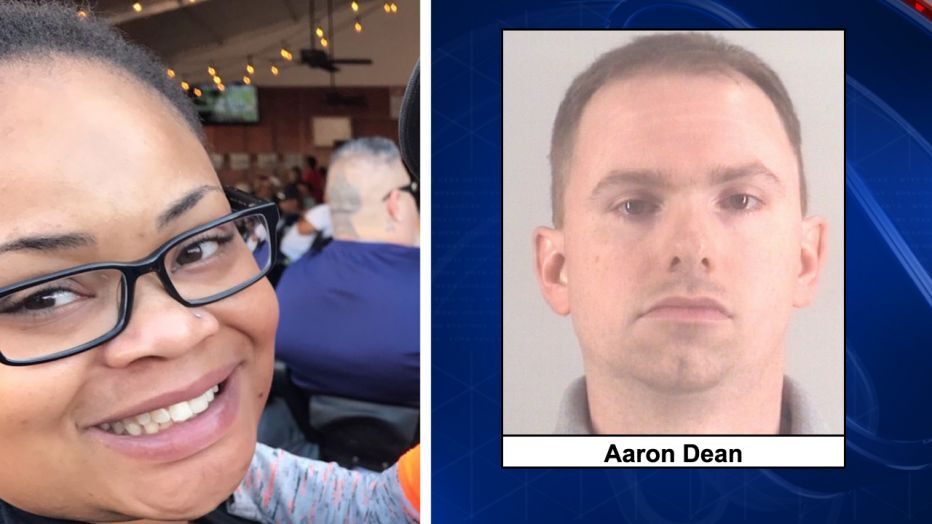
Fort Worth, Texas Police Officer Aaron Dean, 34, has been arrested and charged with murder after he shot and killed a 28-year-old Atatiana Jefferson inside her own home. Aaron Dean was booked into the Tarrant County Corrections Center and later released on a $200,000 bond, according to jail officials. The arrest came just hours after Dean’s resignation from the police force. Dean, who joined the department in April 2018, still faces possible civil rights violations, Kraus said.
Interim police Chief Ed Kraus said during a press conference earlier that he intended to end Officer Aaron Dean’s employment, but that Dean tendered his resignation first. Had the officer not resigned, I would have fired him for violations for several policies, including our use of force policy, our de-escalation policy and unprofessional conduct. Dean was initially placed on administrative leave after he shot Jefferson to death but he has not been cooperating with investigators in the case, Kraus said.
Officer Dean was responding to a non-emergency call from a neighbor for a wellness check after the neighbor saw Jefferson’s front door was open. Jefferson was playing video games with her 8 year old nephew early Saturday morning just minutes before she was killed. Body camera shows that when police arrived, Dean shined a flashlight through Jefferson’s window and yelled, “Put your hands up — show me your hands,” before firing a single shot at Jefferson seconds later. He never identified himself as a police officer.
Police Chief Kraus said he doesn’t know what, exactly, led Dean to open fire. “I cannot make sense of why she had to lose her life.” The chief said Dean resigned without talking to internal affairs investigators. The video included images of a gun inside a bedroom. Kraus said he did not know whether Jefferson was holding the weapon. But he said the mere fact she had a gun shouldn’t be considered unusual in Texas. “We’re homeowners in Texas,” the police chief said. “Most of us, if we thought we had somebody outside our house that shouldn’t be and we had access to a firearm, we would be acting very similarly to how she was acting.” Kraus said that, in hindsight, releasing the images of the weapon was “a bad thing to do.”
Jefferson was staying at her mother’s house in Fort Worth to help her recover from an injury when the shooting happened at about 2:25 a.m. A lawyer for Jefferson’s family, Lee Merritt, said her relatives were “relieved” over the arrest. Merritt said that on the night of the shooting she had been playing video games with her 8-year-old nephew and lost track of time. Earlier that night, he said, the family had opened the front door to allow crisp fall air inside to cool down the house. “We need to see this through to a vigorous prosecution & appropriate sentencing,” he tweeted. “The City of Fort Worth has much work to do to reform a brutal culture of policing.”
In a separate news conference earlier Monday, Jefferson’s family demanded an outside investigation into her death. “This man murdered someone,” Darius Carr, Jefferson’s brother, told reporters. Jefferson was “simply going on along with her life, living a law-abiding citizen’s peaceful life, and she was killed by a reckless act of a Fort Worth police officer,” an older sister, Ashley Carr, said. “There is simply no justification for his actions.” Police Chief Kraus brought the case to the Texas Rangers, who he said were not inclined to take it up at that point, and to the FBI, which did not immediately say whether it would review it.
Read more
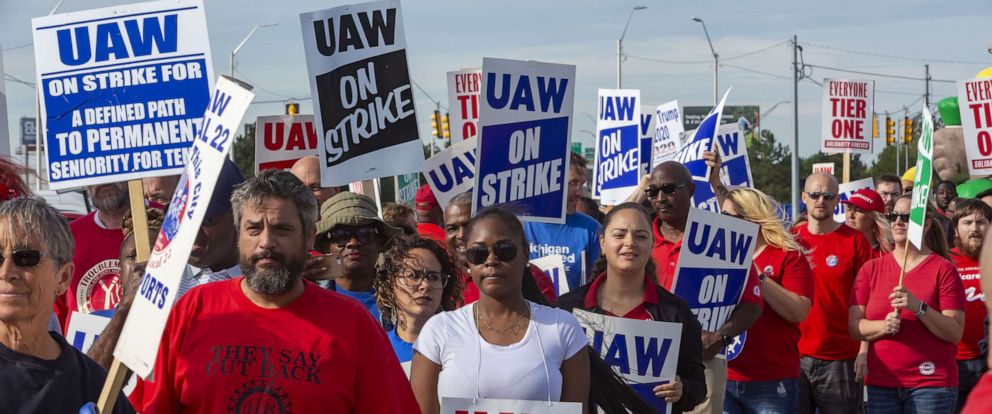
As the GM strike entered its fifth week, the United Auto Workers union announced that picketing workers can expect an extra $25 a week from the union’s strike fund. GM, on the other hand, can expect its dealers to face increased difficulty in sourcing certain replacement parts, while others worry about the prospect of subpar inventory. The UAW’s bargaining team presented a new comprehensive offer to GM as talks continued. In addition to the slightly boosted strike pay, the UAW also lifted the cap on cash earned at outside jobs. Starting Sunday, workers moonlighting at other jobs can keep the full strike payment, regardless of what they made in their alternate gig. Strike payments are typically clawed back on a dollar-for-dollar basis after the worker passes the $250 threshold.
In addition to a host of other issues, health care sits near the top of UAW concerns in this latest round of talks. With GM looking to downsize in an era of shrinking auto sales and economic uncertainty, offering generous health benefits represents a major cost to each company. An agreement was reached between GM and the UAW that keeps the previous health care arrangement intact. The agreement keeps the arrangement where workers cover just 3 percent of their health care costs — an agreement GM briefly abandoned earlier in the bargaining process. The automakers would undoubtedly seek concessions in other areas but unions are not prone to accept concessions lightly.
In the tentative deal with General Motors, the union won on many of its goals, including a path to permanent employment for temporary autoworkers, a faster route to top pay for workers hired after 2007 and a flattened pay structure for permanent employees, who would reach $32.32 per hour by the end of the four-year deal. The biggest obvious loss for the union is the continued closure of the Lordstown Assembly plant in Ohio.
The Lordstown Assembly Plant in Ohio is to remain closed, as will transmission plants in Warren and Baltimore; and a parts distribution center in Fontana, California, will close during the term of the contract. The union said it negotiated assistance packages for workers at Lordstown, Warren and Baltimore transmission plants, including $75,000 payments for eligible production workers and $85,000 for skilled workers who retire. There are also buyout options for those not eligible to retire.
Some other features of the deal include UAW-represented GM workers will get a bonus of $11,000 upon ratification of the deal and temporary workers will get $4,500. GM will invest $7.7 billion in U.S. facilities to create or retain 9,000 jobs. There will be wage increases of 3% in the second and fourth year of the contract, with 4% lump sum payments in the first and third years. Temporary workers, who have been paid $15-$19 an hour with inferior benefits to permanent autoworkers, get a path to a permanent role starting next year. Part-time workers get a path to regular status starting in 2021. These workers also get improved paid and unpaid time off. By September 2023, all permanent manufacturing employees will be at $32.32 per hour.
The tentative deal is far from perfect and the UAW is trying to persuade union workers to accept the deal. Experts said General Motors has lost more than $1 billion in profits, while line workers have lost nearly $750 million in income. With the state of Michigan are losing tax dollars, there’s a growing sentiment that something has to change soon and many hope this deal will finally end the strike.
Read more

A suspect has been arrested after four homeless men were killed and one was critically injured when they were attacked in New York City early Saturday morning. Police said Randy Rodriguez-Santos, 24, who is homeless, wielded a 15-pound metal pipe and apparently attacked the men randomly as they slept on the sidewalks of Lower Manhattan’s Chinatown. Santos is reportedly also homeless and has struggled with addiction. He is charged with four counts of murder, one count of attempted murder and unlawful possession of marijuana.
Police responded to reports of an assault in progress at Doyers Street and Bowery around 2:10 a.m. and found two men with head wounds. One victim was pronounced dead at the scene and another was taken to the hospital in critical condition. Over the next hour, police discovered additional victims in the area, two men were found outside of 2 East Broadway and another was found outside of 17 East Broadway.
Two witnesses told responding officers that the suspect was wearing a black jacket and black pants, which helped police find him quickly just a few streets away. Rodriguez-Santos was apprehended a few blocks from the scene of the attacks and the weapon was recovered nearby. The attacks left blood splattered on the doorways and sidewalks where the men had been sleeping.
The victims, whose ages range from 48 to 83, were bludgeoned as they slept on the street. Three of the four men killed were identified Monday, as lawmakers and mourners gathered at an emotional memorial for the men at Chatham Square. Several sidewalk tributes of flowers, candles and food were placed for the men who were allegedly killed by another homeless man as they slept. One of the mourners cried as she recalled the oldest victim, 83-year-old Chuen Kwok, always being grateful for the food she gave him. New York State assembly woman Yuh-Line Niou choked back tears as she spoke on the mens’ deaths. “If the change isn’t now, after this, I don’t know when it is.”
The medical examiner’s office later confirmed his identity and those of two other victims: 55-year-old Nazario Vazquez Villegas and 49-year-old Anthony Manson. Santos was arraigned on charges of murder and attempted murder for the bloody rampage. He did not enter a plea and was ordered held without bail. Police officials said Santos has been arrested 14 times, some of those for assault, including one in May for an alleged assault at a Brooklyn homeless shelter.
The suspect’s mother, Fioraliza Rodriguez, 55, told news outlets she had kicked him out about three years ago. He struggled with drugs, assaulted her and his grandfather, and stole from the family, she said. “I never thought he would kill someone,” she said. “I was afraid of him, though, because he punched me. That’s when I told him to get out of my house.”
Read more
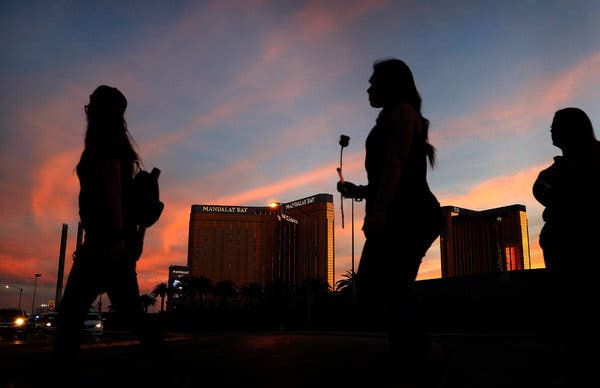
MGM Resorts International has agreed to an $800 million settlement with more than 4,000 survivors of the 2017 massacre outside the Mandalay Bay casino. The settlement was announced after survivors joined friends and families of those killed at a commemoration ceremony marking the second anniversary of the massacre. An independent claims administrator will be appointed by a court to distribute money from a settlement fund. The payout process is expected to be completed by late 2020, lawyers said.
It was October 1, 2017, when a lone gunman named Stephen Paddock used semiautomatic rifles altered with bump stocks to open fire from the resort’s 32nd floor on a country music festival below, killing 58 people and wounding 851 others. Paddock, a reclusive 64-year-old gambler, sprayed bullets on a crowd of 22,000 concertgoers from the 32nd floor of the Mandalay Bay Resort and Casino, which is owned and operated by MGM Resorts. He fired for between 10 to 15 minutes at the country music festival.
It remains the worst mass shooting in modern U.S. history. Lawyers representing survivors and victims’ wanted MGM held liable for negligence because the shooter was able to enter the hotel with luggage that held an arsenal of high-powered, assault-style weapons and thousands of rounds of ammunition. Paddock was found dead in his hotel room from a self-inflicted gunshot wound. Federal investigators have still not been able to identify a motive for the shooting.
Police found 23 guns inside his hotel suite and discovered that he had brought more than 10 suitcases to the room over several days, authorities said. Lawsuits filed since the shooting questioned how and why the hotel did not know he was hoarding high-powered weapons and ammunition in his hotel room in the days leading up to the attack. Attorney Jim Frantz, who represents nearly 200 survivors and the families of four victims, said the settlement “should be a message to all the other corporations and businesses around the country-that they need to step up their security.”
MGM Resorts International and attorneys for about 4,440 plaintiffs, said the final amount of money awarded will depend on the number of plaintiffs who choose to take part in the settlement. “While nothing will be able to bring back the lives lost or the undo the horrors so many suffered on this day, this settlement will provide fair compensation for thousands of victims and their families,” Robert Eglet, one of the lead lawyers for the plaintiffs, told reporters. Eglet called the settlement a “milestone in the recovery process for the victims of the horrifying events” of Oct. 1, 2017. Eglet and lawyers from two California firms represent about 2,500 plaintiffs.
In July 2018, MGM spurred outrage when it aggressively tried to avoid liability by filing federal lawsuits against more than 1,000 victims in a legal maneuver aimed at avoiding liability. In its civil actions, MGM claimed it did not have to pay damages to shooting victims because the company was protected by 2002 legislation, the Support Anti-Terrorism by Fostering Effective Technologies, or Safety Act. It protects corporations in the event of mass attacks committed on U.S. soil, provided services certified by the Department of Homeland Security were deployed. The company cited a federal law passed after the Sept. 11, 2001, attacks that encouraged companies to deploy anti-terrorism security technology without fear of being held responsible for damages in the event of a terrorist attack.
MGM Resorts Chairman and CEO Jim Murren now says that “prolonged litigation around these matters is in no one’s best interest. It is our sincere hope that this agreement means that scenario will be avoided.” The deal is not an admission of any wrongdoing by MGM, Murren said in the statement
Read more

General Motors has told the UAW that it will continue to pay for health coverage for striking workers. GM told the union after it went on strike Sept. 16 at company sites nationwide that it was kicking health care costs to the union, a move that UAW leaders said blindsided them, even though they had anticipated picking up those costs at some point through the strike fund. GM stated they have chosen to work with their providers to keep all benefits fully in place for striking hourly employees, so they have no disruption to their medical care, including vision, prescription and dental coverage.
The strike is the UAW’s first since the Great Recession and GM’s federally induced bankruptcy in 2009. Experts say as the strike continues toward the end of its second week, it has left a lasting economic impact. Strike pay is $250 per week, but it won’t be distributed until the 15th day of picketing. The starting wage for temporary production workers at GM is $15.78 per hour, which is about $630 per 40-hour week. Top-paid production employees, however, earn $30.46 per hour, or about $1,218 per week.
The UAW says that temporary workers are union members doing the same work as permanent employees, but they get half the pay and far fewer benefits. The union wants those workers to get a path to being permanent and get pay and benefits that more closely match their permanent counterparts, even when they’re temporary. GM counters that employing temporary workers is good for permanent employees because they enable the full-time staff to take time off. Hiring temps also gives the company flexibility to scale up production for new models and combat employee absenteeism
The UAW is also fighting for the retention of a health insurance plan in which workers pay about 4% of the costs, an improved pension and assurances that GM — the maker of Buick, Cadillac, GMC and Chevrolet — will not close four plants in Maryland, Ohio and Michigan.
The strike has affected GM facilities in Ohio and Ontario not represented by the UAW. All told more than 3,200 GM workers represented by other unions have been laid off. On Monday, the automaker notified 525 employees at its DMax Ltd. engine plant in Moraine, Ohio, that they temporarily were laid off. GM suppliers, such as Magna International Inc. and Nexteer Automotive, also said they temporarily have had to lay off employees during the strike.
Analysts agree that the cost of the strike is mounting daily for both GM and striking workers, as well as for the broader community. Anderson Economic Group, an East Lansing-based consultant, said in a new analysis Thursday that GM probably has lost profits of $113 million so far, and is now losing money at the rate of $25 million a day. As talks continue toward a UAW-GM contract, negotiations have entered a new stage and moved to the main table. In recent days, talks have been confined to smaller committees as the two sides struggled to hammer out details.
Union leaders have argued that GM workers deserved a bigger slice of the company’s profits, which they say have totaled $35 billion in North America over the last three years. Union members are calling for fair wages, saying for every $1 a GM employee made, CEO Mary Barra made $281. As the strike enters its 3rd week, the national impact will continue until an agreement is reached.
Read more














